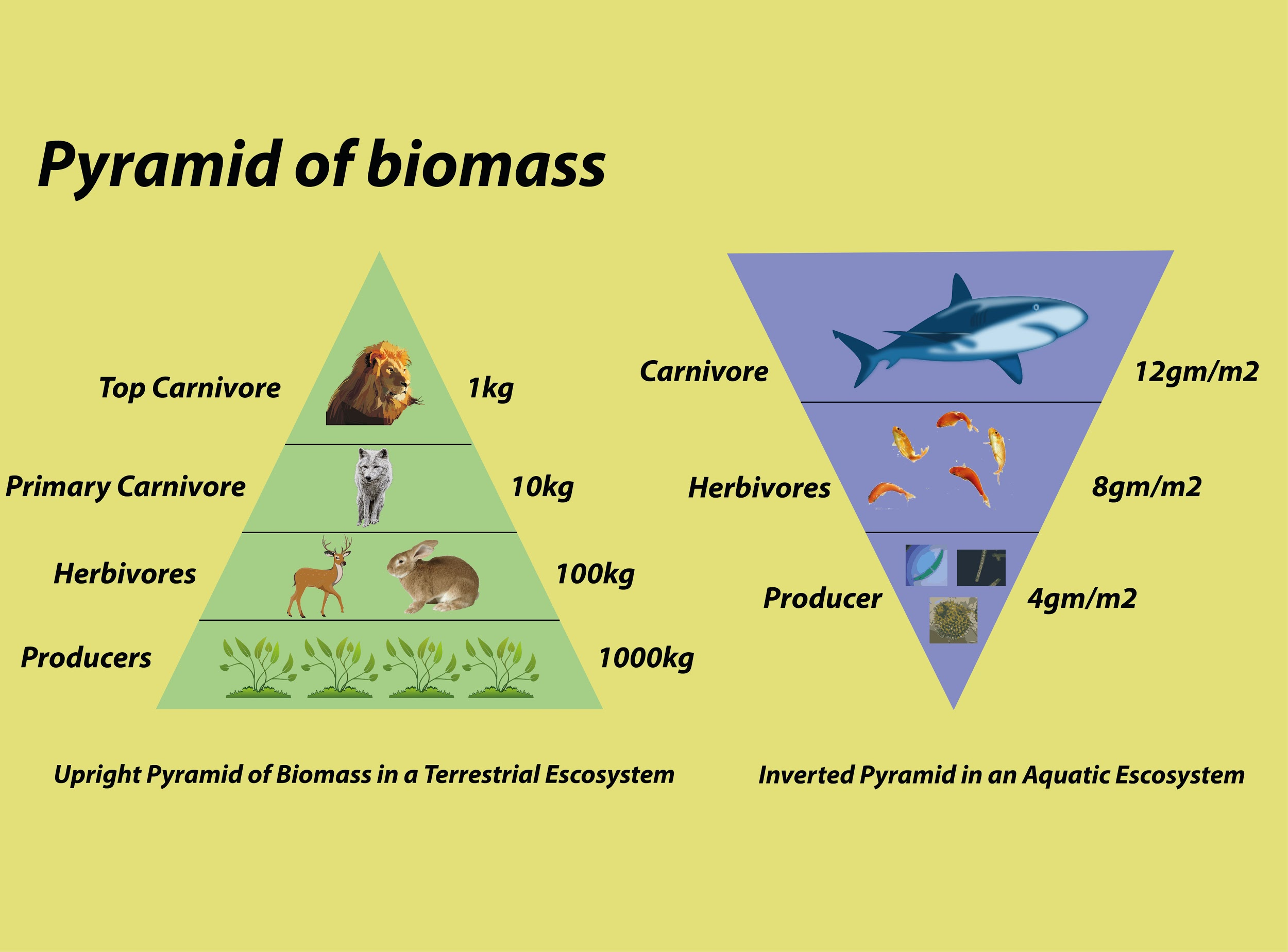
Why are the pyramids referred to as ‘upright’ or ‘inverted’. Explain.
Answer
485.4k+ views
Hint: Pyramids represent the number of individuals in the various trophic levels and the amount of biomass or energy transfer at the different trophic levels.
Complete answer:
Pyramid of energy or biomass is upright and other pyramids can be inverted or take other shapes. When the number of individuals takes into consideration i.e. at the top the number of individual consumers increases and decreases at the bottom thus the pyramid obtained is inverted. When the amount of energy and biomass various in each level always creates an upright pyramid.

Additional Information:
-The pyramid-shaped representation designed to depict the relationship with quantitatively the number of organisms as consumers, or the energy and biomass production and utilization by the ecosystem.
-The idea of the ecological pyramid was given by G. Evelyn Hutchinson and Raymond Lindeman.
In most of the ecological pyramid, the producer forms the base, and the successive trophic levels make up the apex.
-Mainly the ecological pyramid is of three types: the pyramid of the number, pyramid of biomass, and the pyramid of energy.
-Pyramid of energy is always upright as the energy flow in food is always unidirectional.
-Ecological pyramids show a different level of ecosystem feeding on a different level of the ecosystem.
Note:
-The ecological pyramid doesn’t show the relationship of the different ecosystem levels with the climates and seasons.
-In the ecological pyramid of energy, 10% law is followed in which only 10% of energy from the organic matter is passed on the upper level of the ecosystem. The 10% law is given by Raymond Lineman.
Complete answer:
Pyramid of energy or biomass is upright and other pyramids can be inverted or take other shapes. When the number of individuals takes into consideration i.e. at the top the number of individual consumers increases and decreases at the bottom thus the pyramid obtained is inverted. When the amount of energy and biomass various in each level always creates an upright pyramid.

Additional Information:
-The pyramid-shaped representation designed to depict the relationship with quantitatively the number of organisms as consumers, or the energy and biomass production and utilization by the ecosystem.
-The idea of the ecological pyramid was given by G. Evelyn Hutchinson and Raymond Lindeman.
In most of the ecological pyramid, the producer forms the base, and the successive trophic levels make up the apex.
-Mainly the ecological pyramid is of three types: the pyramid of the number, pyramid of biomass, and the pyramid of energy.
-Pyramid of energy is always upright as the energy flow in food is always unidirectional.
-Ecological pyramids show a different level of ecosystem feeding on a different level of the ecosystem.
Note:
-The ecological pyramid doesn’t show the relationship of the different ecosystem levels with the climates and seasons.
-In the ecological pyramid of energy, 10% law is followed in which only 10% of energy from the organic matter is passed on the upper level of the ecosystem. The 10% law is given by Raymond Lineman.
Recently Updated Pages
Glucose when reduced with HI and red Phosphorus gives class 11 chemistry CBSE

The highest possible oxidation states of Uranium and class 11 chemistry CBSE

Find the value of x if the mode of the following data class 11 maths CBSE

Which of the following can be used in the Friedel Crafts class 11 chemistry CBSE

A sphere of mass 40 kg is attracted by a second sphere class 11 physics CBSE

Statement I Reactivity of aluminium decreases when class 11 chemistry CBSE

Trending doubts
10 examples of friction in our daily life

One Metric ton is equal to kg A 10000 B 1000 C 100 class 11 physics CBSE

Difference Between Prokaryotic Cells and Eukaryotic Cells

State and prove Bernoullis theorem class 11 physics CBSE

What organs are located on the left side of your body class 11 biology CBSE

How many valence electrons does nitrogen have class 11 chemistry CBSE




